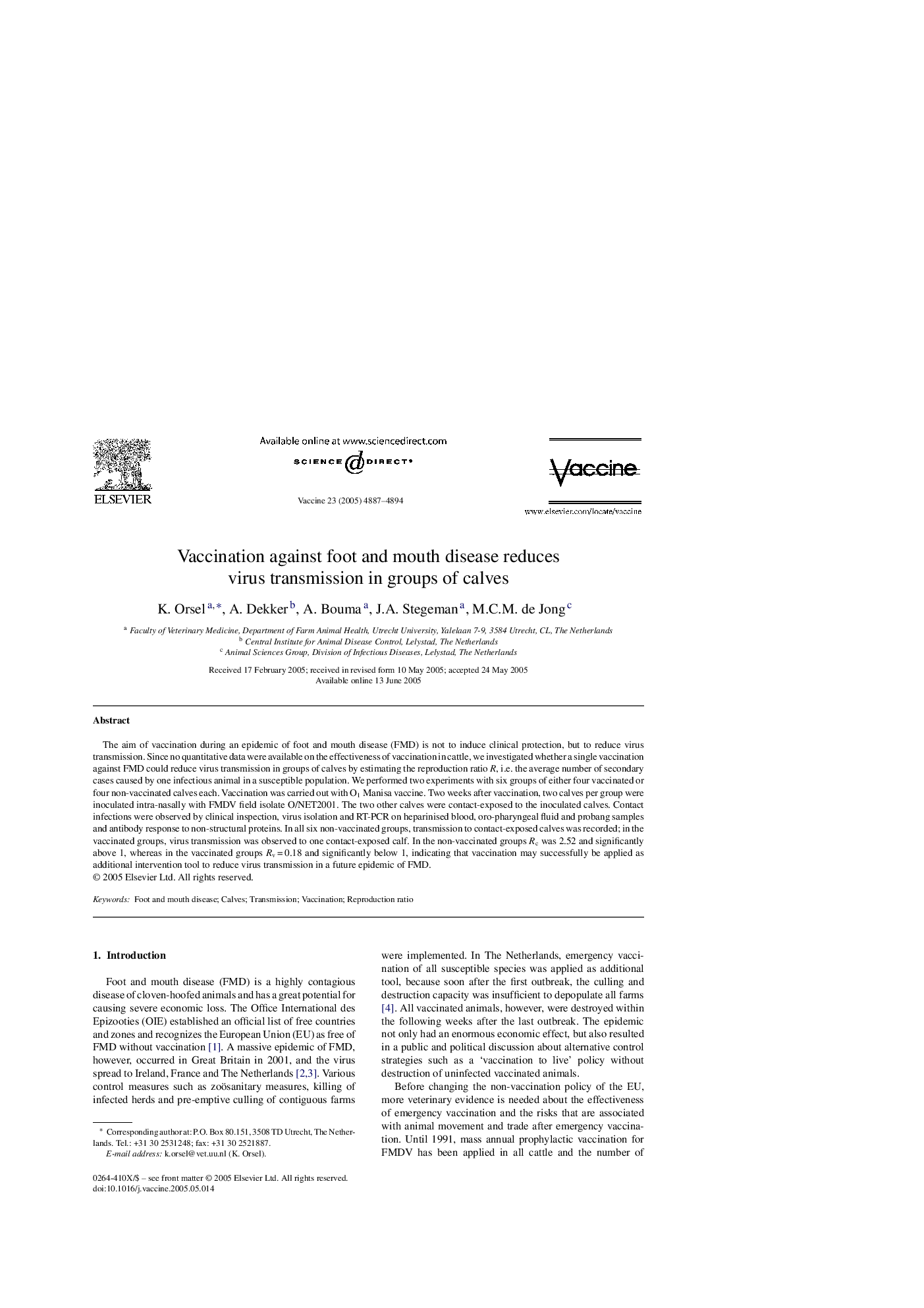| Article ID | Journal | Published Year | Pages | File Type |
|---|---|---|---|---|
| 2410791 | Vaccine | 2005 | 8 Pages |
The aim of vaccination during an epidemic of foot and mouth disease (FMD) is not to induce clinical protection, but to reduce virus transmission. Since no quantitative data were available on the effectiveness of vaccination in cattle, we investigated whether a single vaccination against FMD could reduce virus transmission in groups of calves by estimating the reproduction ratio R, i.e. the average number of secondary cases caused by one infectious animal in a susceptible population. We performed two experiments with six groups of either four vaccinated or four non-vaccinated calves each. Vaccination was carried out with O1 Manisa vaccine. Two weeks after vaccination, two calves per group were inoculated intra-nasally with FMDV field isolate O/NET2001. The two other calves were contact-exposed to the inoculated calves. Contact infections were observed by clinical inspection, virus isolation and RT-PCR on heparinised blood, oro-pharyngeal fluid and probang samples and antibody response to non-structural proteins. In all six non-vaccinated groups, transmission to contact-exposed calves was recorded; in the vaccinated groups, virus transmission was observed to one contact-exposed calf. In the non-vaccinated groups Rc was 2.52 and significantly above 1, whereas in the vaccinated groups Rv = 0.18 and significantly below 1, indicating that vaccination may successfully be applied as additional intervention tool to reduce virus transmission in a future epidemic of FMD.
